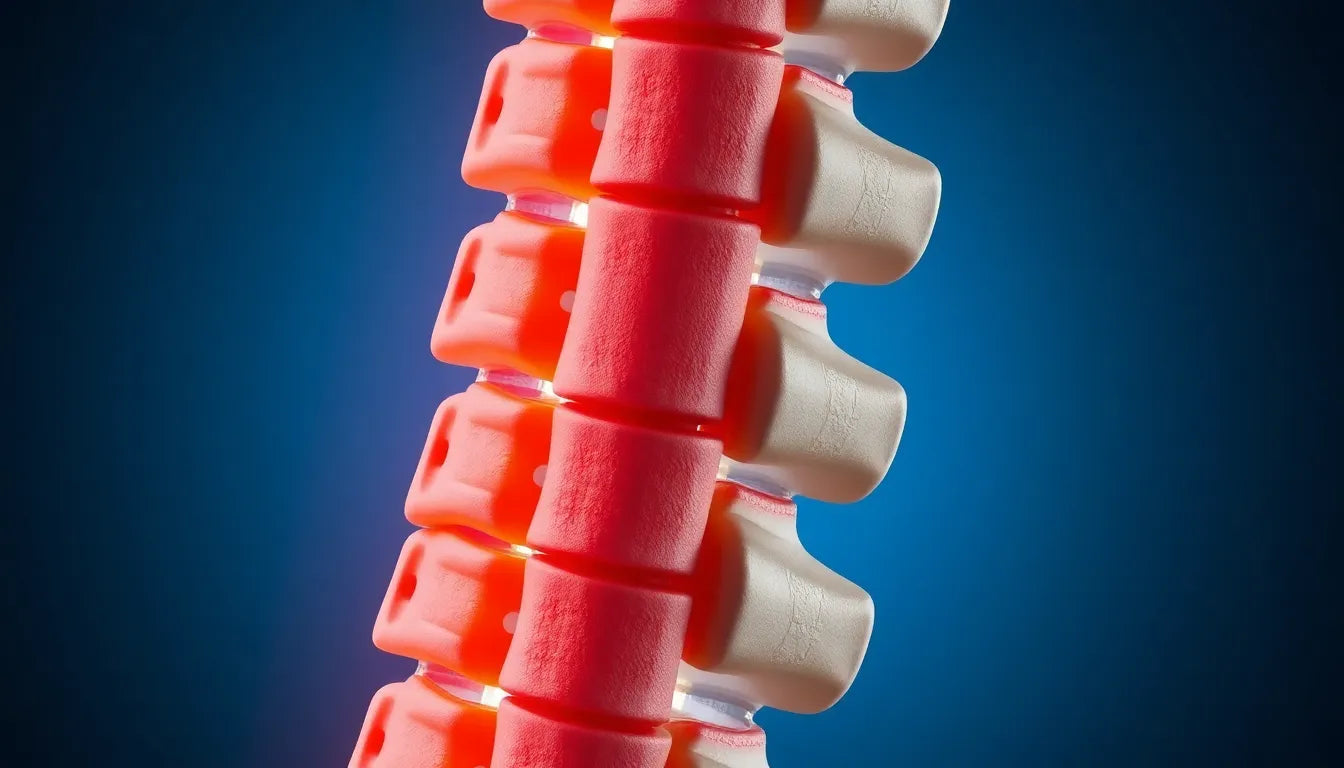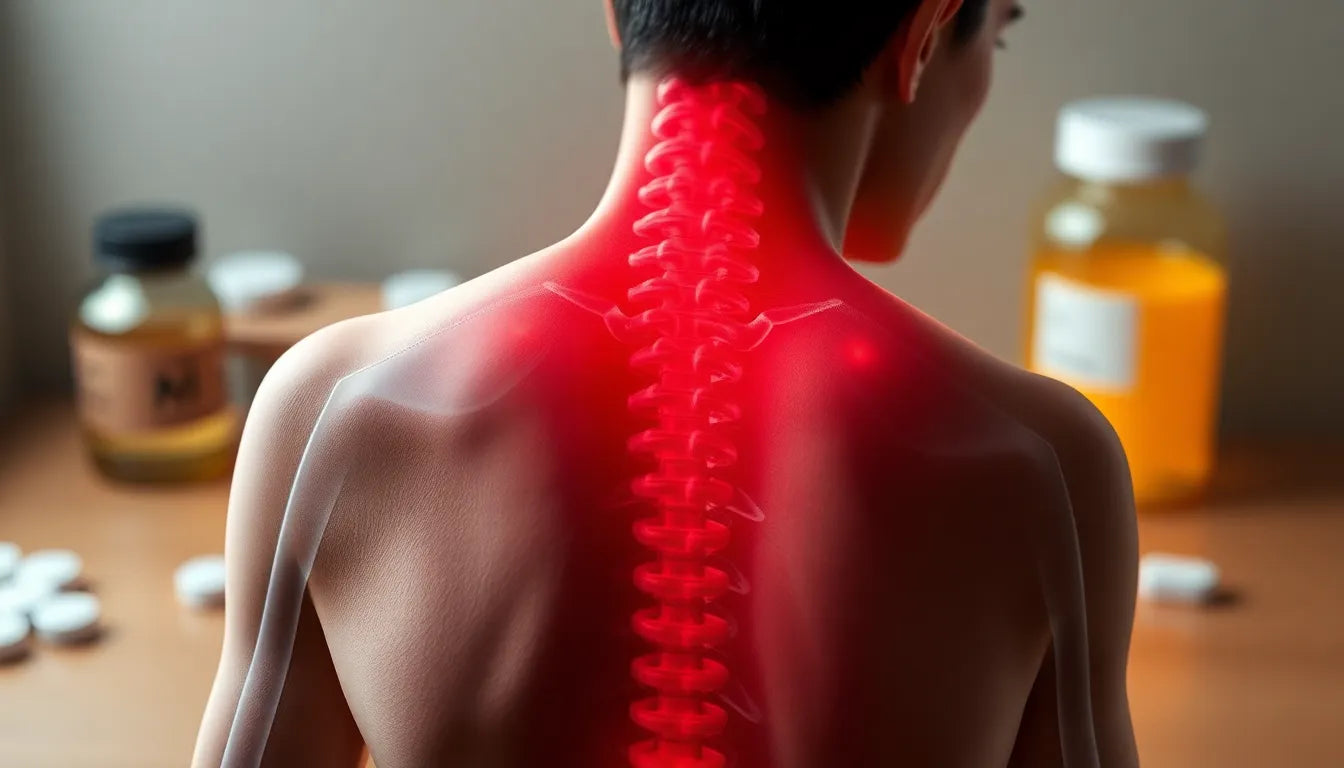Dealing with a herniated disc can be a daunting experience, affecting not only your physical well-being but also your daily routine. This common spinal condition occurs when the soft center of a spinal disc pushes through a crack in the tougher exterior casing, often leading to pain, numbness, or weakness in an arm or leg. While the discomfort can be significant, understanding what not to do with a herniated disc is crucial in preventing further injury and promoting a smoother recovery.
Understanding common recovery mistakes
Many individuals unknowingly make mistakes that can exacerbate their condition. These missteps can range from ignoring vital pain signals to delaying essential medical treatment. Such actions can lead to prolonged recovery times and potentially more severe complications. By being aware of these common pitfalls, you can take proactive steps to manage your condition more effectively.
One of the most frequent errors is dismissing pain as a minor inconvenience. Pain is your body's way of signaling that something is wrong, and ignoring it can lead to more severe damage. Additionally, delaying treatment or self-medicating without professional guidance can result in chronic issues that are harder to resolve. Proper medical advice is essential in crafting a recovery plan tailored to your specific needs.
The importance of avoiding specific activities
Beyond medical treatment, certain activities can significantly impact your recovery process. Twisting or bending the spine, for example, can worsen a herniated disc, as these movements place undue stress on the affected area. Similarly, lifting heavy objects can strain the spine further, making it crucial to adopt safer lifting techniques or use ergonomic aids when necessary.
High-impact exercises and sports should also be avoided, as they can intensify the pain and delay healing. Instead, consider low-impact alternatives that keep you active without compromising your recovery. By understanding and avoiding these specific actions, you can create an environment conducive to healing and prevent further injury.
In the following sections, we will delve deeper into these common mistakes and activities to avoid, providing you with the knowledge and tools needed for a successful recovery journey. Stay informed and take control of your health to ensure that your path to recovery is as smooth and effective as possible.
Common mistakes during herniated disc recovery
When recovering from a herniated disc, it's crucial to listen to your body's signals. Ignoring pain, for instance, can lead to further damage. Pain is not merely a nuisance; it's a warning sign that should prompt you to adjust your activities and seek medical advice. Ignoring these signals can exacerbate the injury, potentially leading to more severe and chronic issues.
Another common mistake is delaying proper treatment. Early intervention is critical in managing a herniated disc effectively. Delaying medical consultation can result in prolonged pain and complications, making recovery more difficult. It's essential to consult healthcare professionals who can guide you through a suitable treatment plan tailored to your condition.
Self-medicating without guidance is also a significant risk. While over-the-counter painkillers might offer temporary relief, they can lead to dependency and mask symptoms that need professional attention. Always follow a doctor's prescription and advice to ensure that your medication supports rather than hinders your recovery.
Nutrition and hydration play a vital role in recovery as well. A diet lacking in essential nutrients can slow down the healing process. Incorporate foods rich in anti-inflammatory properties, such as leafy greens and omega-3 fatty acids, to support your body's recovery. Staying hydrated is equally important, as it helps maintain spinal disc health and reduces inflammation.
Specific activities to avoid for a smoother recovery
When it comes to physical activities, certain movements can significantly impact the healing of a herniated disc. Twisting or bending the spine should be avoided as these actions can increase pressure on the disc, worsening the condition. Everyday activities like reaching for objects on high shelves or twisting while lifting should be modified to prevent unnecessary strain. Instead, consider bending at the knees and keeping your back straight to minimize stress on the spine.
Lifting heavy objects is another activity that can aggravate a herniated disc. The strain from lifting can be detrimental, especially if done incorrectly. If lifting is unavoidable, use ergonomic aids and practice safe lifting techniques, such as keeping the load close to your body and lifting with your legs, not your back.
High-impact exercises and sports are also best avoided during recovery. Activities such as running, jumping, or any sport that involves sudden movements can exacerbate the pain and delay healing. Opt for low-impact alternatives like swimming or walking, which provide gentle exercise without putting undue stress on the spine.
Activities to avoid: a structured list
Certain exercises are particularly harmful to those with a herniated disc. Traditional sit-ups and crunches, for example, can strain the back and should be replaced with safer core-strengthening exercises like planks or pelvic tilts.
Prolonged sitting is another activity to be mindful of. Sitting for extended periods can increase pressure on the spine, leading to discomfort and stiffness. Incorporate regular movement breaks and consider ergonomic solutions like standing desks or lumbar supports to alleviate pressure.
Lastly, forward bending exercises should be avoided as they can exacerbate spinal issues. Instead, focus on stretching alternatives that maintain a neutral spine position, such as lying hamstring stretches or standing quadriceps stretches.
By understanding these common mistakes and specific activities to avoid, you can take proactive steps in your recovery journey. Implementing these insights will help you manage your condition effectively, promoting a smoother and more successful recovery. Stay informed, listen to your body, and consult with healthcare professionals to ensure that your path to recovery is as effective as possible.
Balancing rest and gentle movement for recovery
While rest is essential for healing a herniated disc, complete inactivity can lead to stiffness and prolong recovery. It's important to strike a balance between rest and gentle movement. Engaging in light activities, such as walking or gentle stretching, can improve circulation and promote healing without putting undue stress on the spine. Always consult with a healthcare provider to tailor an appropriate activity level that aligns with your recovery stage.
Ergonomic considerations for a healthier spine
Incorporating ergonomic aids into your daily routine can significantly support the recovery process. Tools like lumbar supports, ergonomic chairs, and standing desks can help reduce strain on the spine by promoting proper posture. These aids ensure that your spine remains in a natural alignment, minimizing discomfort and facilitating a smoother recovery. Consider integrating these products into your home and work environment to create a supportive space conducive to healing.
Frequently Asked Questions
What should I do if I experience severe pain with a herniated disc?
If you experience severe pain, it's crucial to seek immediate medical attention. A healthcare professional can assess the severity of your condition and provide the appropriate treatment plan to manage symptoms effectively.
How can I safely exercise with a herniated disc?
To exercise safely with a herniated disc, focus on low-impact activities such as walking or swimming. These exercises help maintain physical fitness without putting excessive pressure on the spine. Consulting a physical therapist can also provide personalized guidance tailored to your specific needs.
Are there any dietary changes that can aid in recovery from a herniated disc?
Incorporating anti-inflammatory foods into your diet can support recovery. Foods like leafy greens, berries, and omega-3-rich fish can help reduce inflammation and promote healing. Staying well-hydrated is also vital for maintaining spinal disc health.
Can ergonomic products really make a difference in recovery?
Yes, ergonomic products can significantly impact recovery by reducing strain on the spine. Items like ergonomic chairs, lumbar supports, and standing desks encourage proper posture and alleviate pressure, aiding in a more comfortable and effective recovery process.
How long does it typically take to recover from a herniated disc?
Recovery time varies based on the severity of the herniated disc and adherence to treatment and lifestyle adjustments. Generally, recovery can range from several weeks to a few months. Consistently following medical advice and adopting supportive practices can help expedite the process.
Sources
- C3 Spine. "Common Mistakes During Herniated Disc Recovery."
- APEX Spine. "Avoiding Mistakes with Herniated Discs."
- NJ Spine and Ortho. "Exercises to Avoid with Herniated Discs."
- EP Manual Physical Therapy. "Mistakes to Avoid During Herniated Disc Recovery."
- Spine-health. "Everyday Activities to Avoid with a Herniated Disc."



